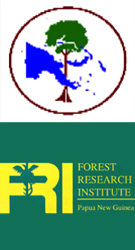First established in 1949, the National Botanic Gardens in Lae play an essential role, acting as the centre of botanical research, conservation and education and recreation for the residents of Lae and people of Papua New Guinea.
The current gardens cover an area of approximately 56 hectares. The Gardens were revived and reopened in late 2015 as part of the Lae National Botanic Garden Advancement Program.
After many years of closure to the public, The Lae National Botanic Garden was recently reopened after a wonderful effort was made by Friends of the Lae Botanic Gardens (FOLBG), PNG Forest Research Institute and some 24 Business sponsors to revive the gardens as part of the Lae National Botanic Garden Advancement Program.
The Gardens
Papua New Guinea is home to approximately five per cent of the world’s bio-diversity in an area that makes up just one per cent of the planet’s total land area. The rich and diverse native flora, containing in excess of 15,000 plant species, characterises the country’s unique and abundant natural resources.
First established in 1949, the National Botanic Garden in Lae (NBGL) plays an essential role, acting as the centre of botanical research, conservation and education as well as providing a range of historic, cultural and recreational opportunities to the residents of Lae and people of Papua New Guinea. The current gardens cover an area of approximately 56 hectares, which includes the lake area of Ruan Wara where the highlands highway meets Milford Haven Road.
After many years of closure to the public, The Lae National Botanic Garden was recently reopened in late 2015 after a wonderful effort was made by Friends of the Lae Botanic Gardens (FOLBG), PNG Forest Research Institute and some 24 Business sponsors to revive the gardens as part of the Lae National Botanic Garden Advancement Program.
Grounds and Plant life
The gardens present size is 57 hectares. Permanent buildings and a nursery that remain today were established in the 1950’s allowing for the propagation and cultivation of both indigenous and exotic species within the gardens. Trial blocks of timber tree species were also planted in the lower area. Towards the later part of the 1950s the ponds in the lower area were constructed and planted with waterlillies. These areas still exist today, although are still in need of upgrading, they offer the visitor an enchanting experience.
Today the gardens continue to operate an orchid nursery; tropical herbarium and other nurseries whereby both live and preserved plant specimens will contribute to the delivery of this Program.
Species
Approx. no. Herbarium specimens: 400,000+
Plant Collections: Native Araceae, Begoniaceae, Orchidaceae (+1,000 spp.), Poaceae (Bamboo), Elaeocarpaceae, Combretaceae, Cycas, Guttiferae, Hoya, Leguminosae, Musaceae, Myrtaceae, Arecaceae (Palms), Sapindaceae, Rubiaceae, Dipterocarpaceae,Pandanaceae and Zingiberaceae, Heliconia, cacti, timber trees (such as Khaya, Pometia, Eucalyptus,Cedrela, Casuarina, Elmerrillia and Agathis), fruit trees (such as mangosteen, guava, mango, green jungle fruit, Lancium, rambutan, durian, avocado, soursop, nutmeg, bread-fruit and pomelo), conifers, tropical ornamentals.
No. of taxa: 400-500+ species of plants, both native and exotic plants.
Rare & Endangered plants: native plants, orchids, Strongylodon macrobotrys, Lodoicea maldivica, Latania commersonii
Access and infrastructure
Essential infrastructure is in place to provide internal access, safety and enjoyment of the grounds. This incudes a security fence around the perimeter, 5 picnic areas with shelters and BBQ facilities and a toilet block in the Northern precinct.
In partnership with the Government of Japan the PNG Forestry Research Institute was established in 1989 to provide research facilities and programs.
Management staff, grounds people and a security team are already in place to maintain the grounds and deliver research and other programs.
Maintenance of existing infrastructure and building of additional infrastructure as part of the National Botanic Garden (Lae) Advancement Program has ensured visitors can safely access the gardens once again.
Opening Hours
Monday – Friday: 9:00am – 4:00pm
Weekends: 8:30am – 4:40pm
Entrance Fees:
Adult: K5
Student: K2
Child: K1
Infant: free
Events: K300 for use of BBQ and shed facilities* (direct deposit only)
+ K5 per person
Events in the Gardens will need to be arranged in advanced. K300 will give you or your company use of one picnic shed and BBQ facility and an additional K5 per person will be charged for your group.
Payment
Access to the gardens as public or for events can be arranged by contacting the Forest Research Institute*.
Wala Koila
Phone: (675) 472 4188
Mobile: (675) 717 642 58
Fax: (675) 472 4357
Email: wkoila@fri.pngfa.gov.pg
*Please note that your group/event booking is only confirmed once the direct deposit payment has been received. Direct Deposit payments only for group bookings to the following account;
Account name: Botany Imprest Account
Account number: 088-202-1000584976
Bank: Bank South Pacific (BSP Bank)
Waigani Branch.
In the future, individuals will be able to pay cash & gain entry, please contact FRI to learn of the best payment method for entry.
Entry
There are two main entrances to the gardens.
Make sure you have your payment receipt to show to security in order to be allowed through the gates.
Milford Haven Road Entry – At the guard house, entry off Milford Haven Road
Forest Research Institute – Huon Road Entry: for entry and payment of fees – Entry off Huon Road
Knowledge and Information
The NBGL team has collected much information about PNG’s ethno-botanical collections and attributes. This information was once sign posted and available to the public throughout the gardens. The National Botanic Gardens Lae Advancement Program hopes to re-build this feature and infrastructure to educate PNG and the rest of the world about PNG’s diverse and abundant plant and animal life. Education and awareness forms a significant part of the PNG Botanic Garden’s Program.




